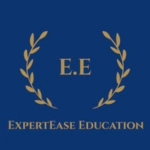In the evolving landscape of education, a comprehensive curriculum guide serves as a foundational tool for educators. This essential resource outlines the structure, content, and delivery methods of educational programs, ensuring that students receive a coherent and consistent learning experience. As an expert educator, understanding how to develop and utilize a curriculum guide effectively can transform teaching and learning outcomes.
What is a Curriculum Guide?
A curriculum guide is a detailed document that provides educators with a roadmap for teaching a specific subject or grade level. It includes objectives, standards, instructional strategies, assessment methods, and resources. By following a well-constructed curriculum guide, teachers can ensure that they cover all necessary content and meet educational standards while accommodating diverse student needs.
Key Components of an Effective Curriculum Guide
1. Clear Objectives and Learning Outcomes
Every curriculum guide should start with clear objectives and learning outcomes. These define what students are expected to know and be able to do by the end of the course or unit. Well-defined outcomes help teachers focus their instruction and provide students with a clear understanding of the goals they are working towards.
2. Aligned Standards
Aligning the curriculum with state or national standards ensures that the content meets educational requirements and prepares students for standardized assessments. This alignment also provides a benchmark for evaluating student progress and curriculum effectiveness.
3. Comprehensive Content Outline
A detailed content outline breaks down the subject matter into manageable units or lessons. This section of the curriculum guide should include key topics, concepts, and skills to be covered, organized in a logical sequence. This helps ensure that instruction is systematic and thorough.
4. Instructional Strategies
Effective curriculum guides offer a variety of instructional strategies to cater to different learning styles and needs. These might include direct instruction, collaborative learning, project-based learning, and technology integration. Providing a range of strategies helps teachers engage all students and enhance their learning experiences.
5. Assessment Methods
Incorporating diverse assessment methods allows teachers to measure student understanding and progress accurately. A robust curriculum guide includes formative assessments (e.g., quizzes, observations, peer reviews) and summative assessments (e.g., tests, projects, presentations). These assessments should align with the learning objectives and provide meaningful feedback.
6. Resources and Materials
A well-rounded curriculum guide includes a list of resources and materials that support instruction. This can range from textbooks and online resources to multimedia tools and hands-on materials. Providing these resources helps teachers prepare effectively and enriches the learning environment for students.
Benefits of Using a Curriculum Guide
1. Consistency and Coherence
A curriculum guide ensures that all teachers within a grade level or subject area are following the same framework, promoting consistency and coherence across classrooms. This uniformity is crucial for maintaining high educational standards and ensuring that all students receive a quality education.
2. Efficiency in Planning
With a clear roadmap in place, teachers can save time on lesson planning and focus more on delivering effective instruction. A curriculum guide provides a structured plan that helps educators stay organized and on track throughout the academic year.
3. Improved Student Outcomes
By aligning instruction with well-defined objectives and standards, a curriculum blueprint helps improve student outcomes. Students benefit from a structured learning path that progressively builds their knowledge and skills, leading to better academic performance and preparation for future challenges.
4. Professional Development
A curriculum guide serves as a valuable tool for professional development, helping teachers enhance their instructional practices. By providing a framework for effective teaching strategies and assessment methods, the guide supports continuous improvement and professional growth.
Practical Tips for Developing a Curriculum Guide
1. Collaborate with Colleagues
Developing a curriculum guide is most effective when done collaboratively. Work with fellow educators, subject matter experts, and administrators to ensure that the guide is comprehensive and meets the needs of all stakeholders.
2. Regularly Review and Update
Education is a dynamic field, and curriculum guides should reflect current best practices and educational standards. Regularly review and update the guide to incorporate new research, technologies, and feedback from teachers and students.
3. Incorporate Flexibility
While consistency is important, flexibility within the curriculum guide allows teachers to adapt instruction to meet the unique needs of their students. Provide optional activities, alternative assessments, and additional resources to accommodate diverse learning styles.
4. Utilize Feedback
Gather feedback from teachers and students on the effectiveness of the curriculum guide. Use this feedback to make necessary adjustments and improvements, ensuring that the guide remains relevant and effective.
Conclusion
A well-crafted curriculum is an indispensable tool for educators, providing a clear and structured approach to teaching and learning. By focusing on clear objectives, aligned standards, comprehensive content, varied instructional strategies, and diverse assessment methods, educators can enhance their teaching practices and improve student outcomes. Embrace the power of a curriculum guide to create a path to educational excellence in your classroom.
What’s Next ?
A properly designed Curriculum is essential for preparing students to thrive in a rapidly changing world. By focusing on student-centered learning, integrating technology, adopting interdisciplinary approaches, ensuring real-world relevance, and promoting collaborative learning, educators can create dynamic and effective educational programs. Embracing these strategies not only enhances student engagement and learning outcomes but also equips students with the critical skills they need for future success.






